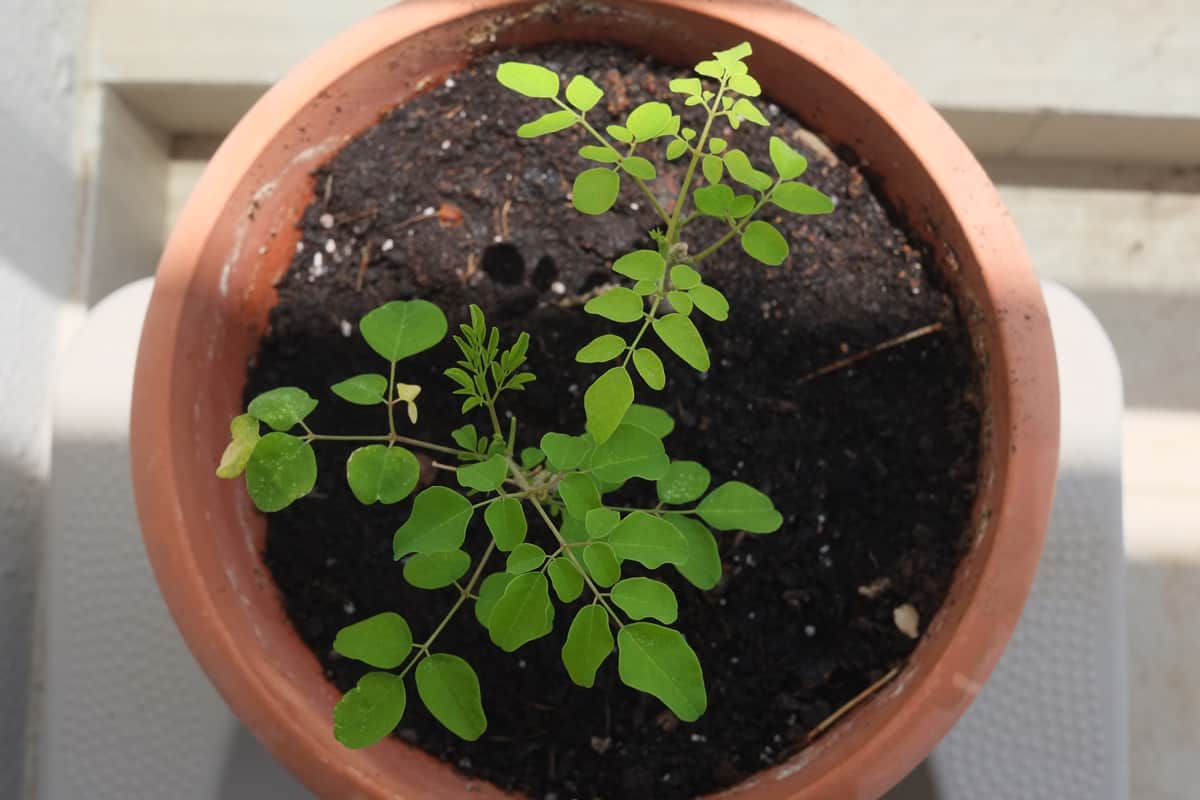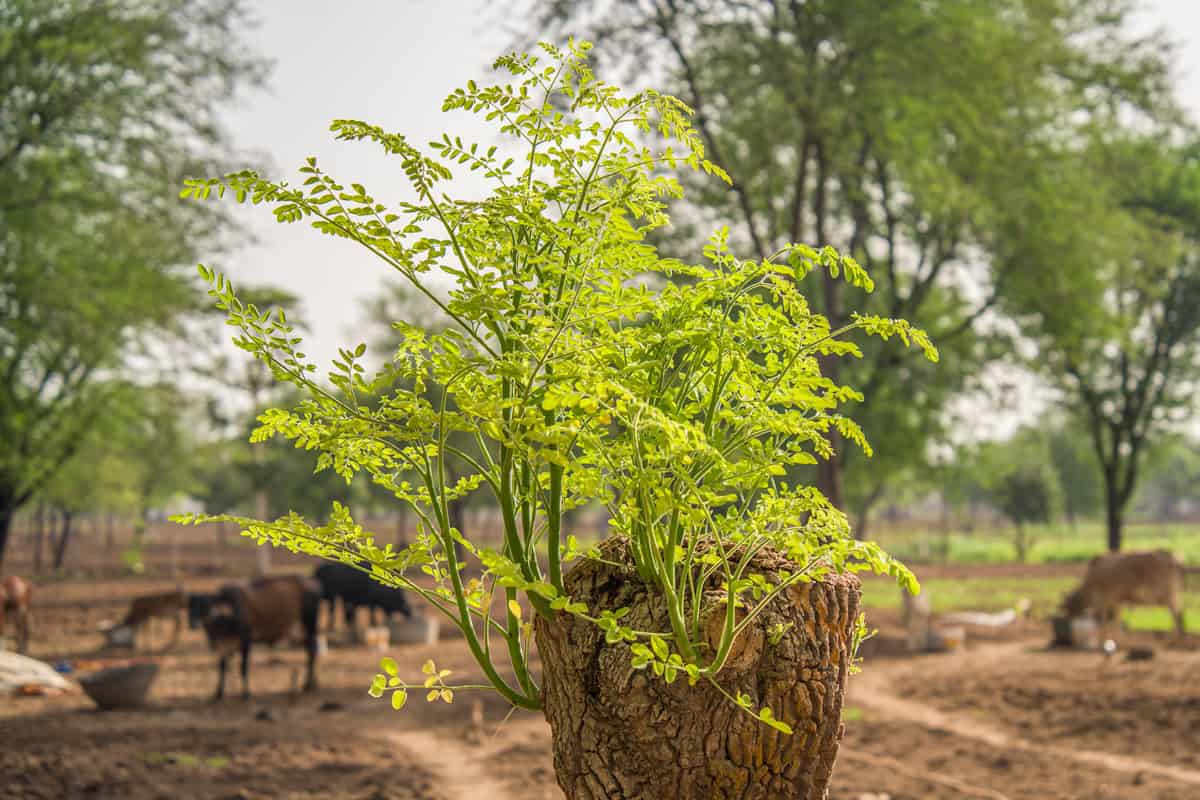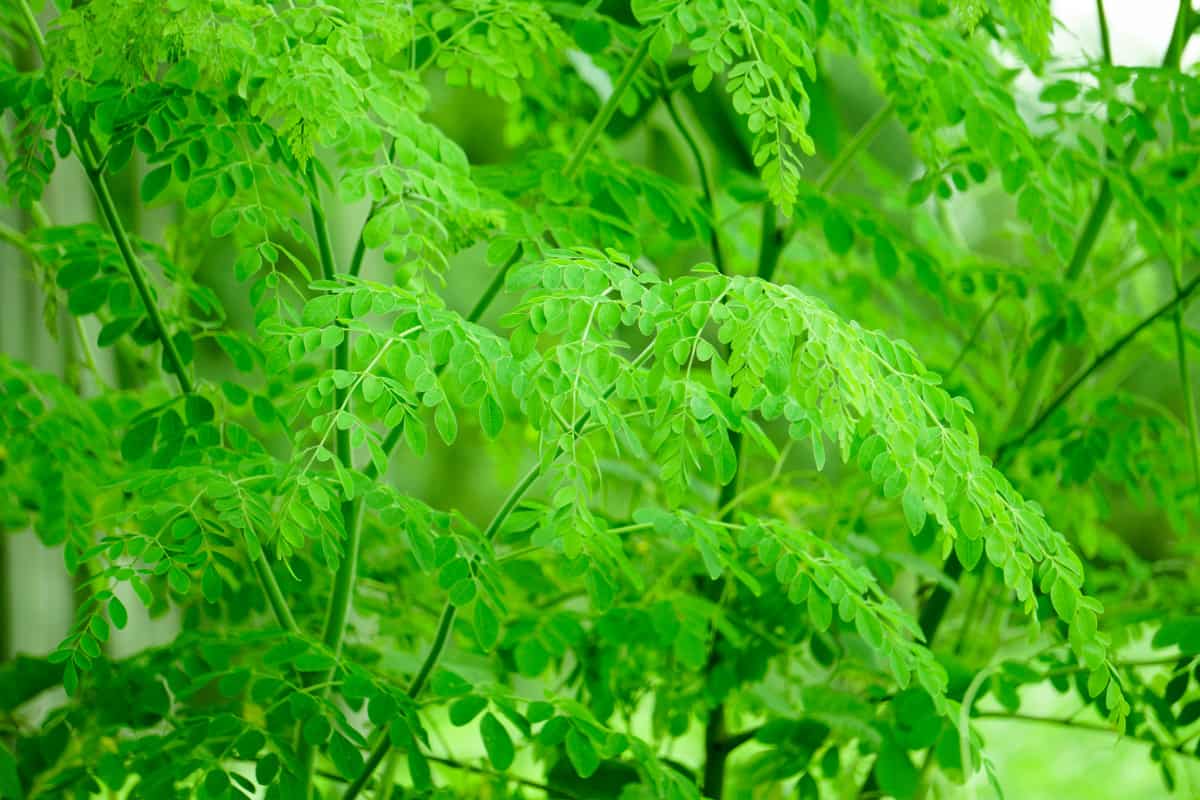Who doesn't want to grow moringa when you learn about the benefits of this miracle tree? Moringa commonly grows in tropical countries because they don't like the cold. If you want to grow the tree but have limited outdoor space or get harsh and cold weather, we've researched how you can grow it indoors!
It's easy to grow moringa indoors. Just follow these simple steps:
- Pick the perfect indoor spot.
- Prepare the soil.
- Choose the pot.
- Plant moringa seeds.
- Water your plant.
- Prune your moringa tree.
Keep reading to learn more about the steps for growing moringa trees indoors and how to grow them from cuttings. We'll also share tips on how to make them flourish. With that said, let's dive right in!
How To Grow Moringa Indoors

Moringa plants are fast-growing even if they require little maintenance. They're also sustainable in small, confined spaces.
Follow the steps below to grow them inside:
1. Pick The Perfect Spot
Moringa plants are easy to grow. They have one essential requirement: at least 6 hours of direct sunlight daily. Without enough sunlight, its growth may be hindered.
The perfect spot to place the plant is in front of a window that faces south. These south-facing spots receive the most significant amount of sunlight.
2. Prepare The Soil
Once you've identified the perfect, sunny spot for your moringa plant, you can prepare the soil. A good soil mix is 70 percent potting soil, 15 percent sand, and 15 percent compost manure.
Moringa is a robust plant and can withstand poor soil conditions. However, it is vital to incorporate sand in the soil. The sand will let water permeate to drain excess water, lessening the chances of root rot.
3. Choose The Pot
Click here to see this product on Amazon.
Initially, you can plant your moringa in a small pot, 6 to 8 inches in height. The plant has a deep taproot system and will need to be transferred to a taller container when it grows.
You'll need a pot at least 22 inches in height for adult plants.
Ceramic or terracotta pots are good choices for growing moringa in hot climates. Soil temperature can get very high in plastic containers during the summer.
Whatever pot material you choose, it should have holes at the bottom. These holes drain any excess water from the soil to prevent root rot, as it can kill the plant.
4. Plant Your Seeds
You can plant seeds immediately after collecting them from inside the long pods of the tree. It's best to use the seeds from pods that have dried up.
Of course, moringa seeds can also be purchased from gardening stores.
To plant your seeds, loosely fill your pot with your soil mix. You can put 3 to 5 seeds in a single hole. Lightly dig a hole 1/2 inch deep in your soil. Place a seed in each hole and pat it closed with more soil.

5. Water Your Plant
Moringa plants need a lot of water when they are young. Keep the soil damp from the time you sow until 2 or 3 months after planting.
As the tree ages, it will become sensitive to too much water. After it matures, start watering it deeply but less frequently. Check the condition of the soil before watering. If it looks or feels dry, water your tree.
Water your moringa plant with 1/2 cup water daily for 2 to 3 months. You can later on gradually increase the amount of water.
Look out for signs of overwatering your plant. Yellow-colored leaves and excessively wet soil may indicate too much watering.
6. Prune The Moringa Tree
As mentioned earlier, moringa grows fast. You'll find that, within a year, you'll have a very tall and leafy plant. Once your tree starts branching out, prune regularly.
Moringa trees can quickly grow up to 30 feet tall! Aggressively prune your tree when it reaches 8 to 12 feet tall. This keeps your tree manageable. Doing so keeps it small and also ensures the prolific growth of leaves.
For more tips on pruning, read our article, Where Do You Cut When Pruning A Plant?
Why Do People Consider Moringa A Miracle Plant?

Moringa has been called the miracle plant for good reasons. The plant has numerous medicinal properties and high nutritional value.
The leaves are rich in vitamin C, potassium, and calcium. Moringa has also been known as a remedy for several ailments and diseases, including diabetes, arthritis, and even cancer.
This miracle tree grows natively in India but can also be seen in other countries in Asia, South Africa, and Latin America. They have green, tear-drop-shaped leaves and cream-colored flowers.
How Do You Grow Moringa From Tree Cuttings?
You can grow moringa from pruned tree cuttings. The best parts to use for propagation are the woody branches of the plant. Using cuttings will save you time growing your tree.
The steps are very similar to growing from seeds. You're just replacing the seeds with tree cuttings. Propagating from cuttings will require a bigger pot.
You'll need wood cutting from your moringa tree that's at least 8 inches long and about an inch in diameter. If you're planting outdoors, dig a hole 3 feet deep and 3 feet in diameter.
Fill the gap with your soil mixture, then place your cut branch inside.
Moringa cuttings take anywhere from 4 weeks to 4 months to take root. It can be longer in colder climates.
How Long Does A Moringa Tree Live?
![Young Moringa leaves in nature light, alternative medicine plant, How To Grow Moringa Indoors [In 6 Easy Steps]](https://gardentabs.com/wp-content/uploads/2023/01/14.-How-To-Grow-Moringa-Indoors-In-6-Easy-Steps14.-How-To-Grow-Moringa-Indoors-In-6-Easy-Steps.jpg)
There are different species of moringa, the most common being the Moringa Oleifera. This tree can live up to 40 years with proper care and the right environment.
Other Care Tips For Moringa Trees
Your plant won't require special attention. As long as the plant gets an ample supply of sunlight and water, with regular pruning, it will thrive. Caring for your tree will often be easy, but it doesn't mean it will be trouble-free.
Here are a few things you can do to prevent possible growing problems:
Fertilize
Apply a layer of organic fertilizer around your tree. You may also regularly add compost to the soil. This can promote growth and pod development.
Click here to see this product on Amazon.
Use Natural Insecticides And Pesticides
Spray your tree with neem oil to ward off insects and pests like aphids and caterpillars.
Use bacillus thurigiensis spray once you notice an infestation of armyworm or cutworm. Fungicide can be used if your tree shows signs of fruit or twig rot.
The moringa fruit may attract fruit flies. To ward them off, regularly harvest the fruits when they are still young.
How Long Does It Take Moringa To Produce Fruit?

After sowing moringa seed, you can only harvest leaves for 6-8 months. The flowers come after this period. Moringa bears fruit after they flower.
When Can I Start Harvesting Leaves And Fruits From My Moringa?
You can start harvesting leaves from your moringa tree when the leaves begin to grow at 6 to 8 weeks. New leaves will start to grow, and you may harvest them anytime.
You can harvest pods when they are 6 inches long. When the pods are young, the whole pod can be prepared and eaten like string beans.
What Is The Best Season To Grow Moringa?
Moringa can be planted year-round in tropical and sub-tropical countries. Spring is the best time if you want to grow a tree in the U.S. or any other country with four seasons. Sow your seeds from March to May.
Moringa has successfully been grown in parts of the Southern and Western United States.
The plant is deciduous, so expect its leaves to fall off starting in autumn. The trees can survive a light frost but go dormant during winter.
To Finish Up
Growing a moringa tree inside can be beneficial in so many ways. Every single part of the tree has good use. They're easy to plant and are low-maintenance.
Yes, they are tropical and sub-tropical plants, but by following the steps we provided, you can grow them indoors anywhere in the world!
Before you go, check out this related garden article:


